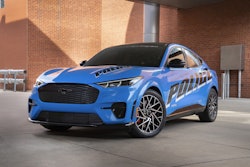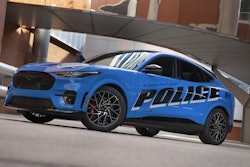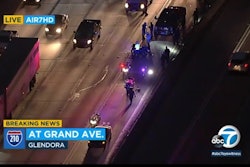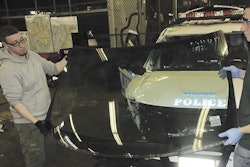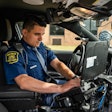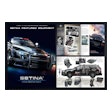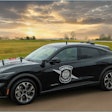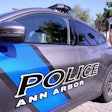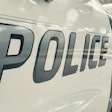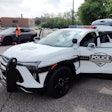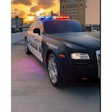![[|CREDIT|]](https://img.policemag.com/files/base/bobit/publicsafety/image/2021/09/pm.chp_motor_stop.jpg?auto=format%2Ccompress&fit=max&q=70&w=400)
Motorcycle patrol demands a great deal of individual initiative which in turn is rewarded with a great deal of individual freedom. Officers working on motorcycles have freedom that is the envy of many cops stuffed into a patrol car that constantly seems to be shrinking with the addition of more and moreequipment.
Officer initiative is one of the things that makes motor units so good at traffic enforcement. An experienced motorcycle officer will know precisely when and where a speeder, a signal light runner, or even a reckless driver will appear before them to receive a very costly written citation, which has the very real potential to save priceless human lives.
When did motorcycle units become such an omnipresent element to the traffic enforcement landscape? Why are motorcycle units so successful at this mission? How are these units staffed, trained, and maintained? Here’s a look at the mission of the men and women of the winged-wheel units.
Beginnings
The roots of contemporary police motorcycle operations may perhaps be found in the command of Chief August Vollmer of the Berkeley Police Department. Historians say the very first motorcycle put into police service was with the Detroit Police Department in 1908 but Vollmer is widely credited with organizing the first official police motorcycle patrol unit in the United States in 1911.
Over the decades that passed thereafter, motorcycles were put into service at agencies of all size across the country, and by mid-century the sight of a motor officer was commonplace on many American roads.
The image of the American motor officer was cemented into the public imagination with the airing of the TV show “CHiPs,” which debuted in 1977 and followed the fictional lives of California Highway Patrol Officers “Ponch” Poncherello and Jon Baker as they rode around the Los Angeles metropolitan area for 139 episodes.
But the storied history behind the California Highway Patrol Motor Unit dates many years back beyond the laughable story lines and regrettable ‘70s haircuts featured in “CHiPs.”
It’s interesting to note that when the California Highway Patrol was first formed, all of the agency’s enforcement operations were conducted exclusively by motorcycle—four-wheeled vehicles were introduced to the fleet later.
On its website, California Highway Patrol states that its primary mission is the “management and regulation of traffic to achieve safe, lawful, and efficient use of the highway transportation system.”
Translation: “traffic enforcement.”
Motor Training
CHP has more than 400 motorcycles in service, with about 350 motorcycle officers patrolling just shy of 107,000 miles of interstate freeways, state highways, rural roads, and surface streets statewide. In 2020 CHP motor officers drove nearly 5.5 million miles, according to agency records.
Among those assigned the task of training the CHP’s Motor Officers are Captain Robin Johnson and Sergeant Braden Moffett, who have more than 26 years of Motor Patrol experience with CHP between them.
Captain Johnson—who was recently promoted from Lieutenant Commander and is now the CHP Academy Commander—says, “Back in 1929 when the highway patrol started, everybody was trained on motorcycles. There wasn’t anybody who came through the highway patrol who wasn’t trained on amotorcycle.”
Johnson and Moffett—as well as the other instructors at the CHP Academy—place a great deal of emphasis on officer safety throughout their training.
Moffett says that the CHP Academy now rigorously trains officers for the wide variety of traffic enforcement assignments, noting that on rural roadways and city streets enforcement is typically geared more toward right-of-way violations while on freeways enforcement may emphasize speeding infractions, reckless driving, distracted driving, and driving while drunk.
Moffett adds, “Our training program here at the academy is regarded as one of the top in the country—people from all over the country send their motorcycle officers out here to train with us.”
A sizable number of the more than 7,000 sworn officers with the CHP have an interest in working motorcycle patrol—that competition for a position enables the agency to consistently select great candidates.
Moffett says that the CHP Academy now rigorously trains officers for the wide variety of traffic enforcement assignments, noting that on rural roadways and city streets enforcement is typically geared more toward right-of-way violations while on freeways enforcement may emphasize speeding infractions, reckless driving, distracted driving, and driving while drunk.
Moffett adds, “Our training program here at the academy is regarded as one of the top in the country—people from all over the country send their motorcycle officers out here to train with us.”
Mitigating Danger
Police work is inherently dangerous. Riding motorcycles is inherently dangerous. Doing both at the same time is… inherently dangerous.
An exact number of injuries sustained by officers while patrolling on a motorcycle is not precisely known, but the prevalence of news headlines on such incidents is ample evidence to determine that it’s a lot. Even working dignitary protection or escorting a line-of-duty death has perils. In those cases, motor officers are typically riding in close formation, sometimes traversing considerable distances at varying speeds over different types of roadway, which is dangerous.
Although we don’t have a statistic for how many officers have been seriously injured serving in motor patrols, we do know the number of officers to have died in the line of duty as a result of motorcycle crashes. According to NLEOMF, of the 22,611 names etched onto the National Law Enforcement Memorial in Washington, DC, 1,382 died in motorcycle crashes.
To avoid injuries and deaths, motor officer training nationwide is intensive, thorough, and frequent, as evidenced by the work being done at the CHP’sAcademy.
Also, motor officers commonly participate in activities in their off time that sharpen their skills in the saddle—the most notable example is the popularity of precision riding competitions. Such events are held all over the country, and attract motor officers from far and wide. Some events raise money for charity—all of them raise morale while also elevating participants aptitude and acumen on the motorcycle.
Still, sometimes bad things happen, and in times of dwindling budgets, some motorcycle units have found themselves on the short end of the stick.
Into the Sunset?
CHP has a long history of motorcycle enforcement, and it’s proven to be an important resource with regard to the safety for the motoring public throughout the state. However, some law enforcement agencies are dismantling or significantly decreasing their motorcycle operations.
Some agencies have pulled motorcycles from traffic enforcement duties, relegating them only to participation in parades, ceremonies, funeral escorts, and crowd control operations at large public events.
Some departments—including Austin, Baltimore, and Toledo—have disbanded their motorcycle units altogether, saying that keeping those elements running is either too dangerous or too expensive or both.
Meanwhile, police leaders who see myriad benefits of maintaining a robust motorcycle unit have successfully argued that the benefits outweigh the risks. Some of those benefits are not immediately clear, but are real regardless.
For example, in the event of a sudden large-scale critical incident—active shooter, terror attack, building collapse, etcetera—officers previously engaged in traffic enforcement can immediately roll to the event, supplementing the activities of other first responders.
Officers on motorcycles can traverse terrain no squad car can navigate. They can split lanes in stopped traffic. They can carve tracks in grassy fields and weave through wooded areas if circumstances demand such urgency.
But the primary benefit of a motorcycle unit, of course, is increasing the safety of the driving public through traffic enforcement operations.
“Our officers—whether in a car or on a motorcycle—all have the same goal to reduce traffic deaths and injuries,” CHP’s Johnson says. “The end game is the traffic enforcement. There’s a public safety benefit that reduces traffic deaths and traffic injuries.”
Doug Wyllie is contributing web editor for POLICE.






